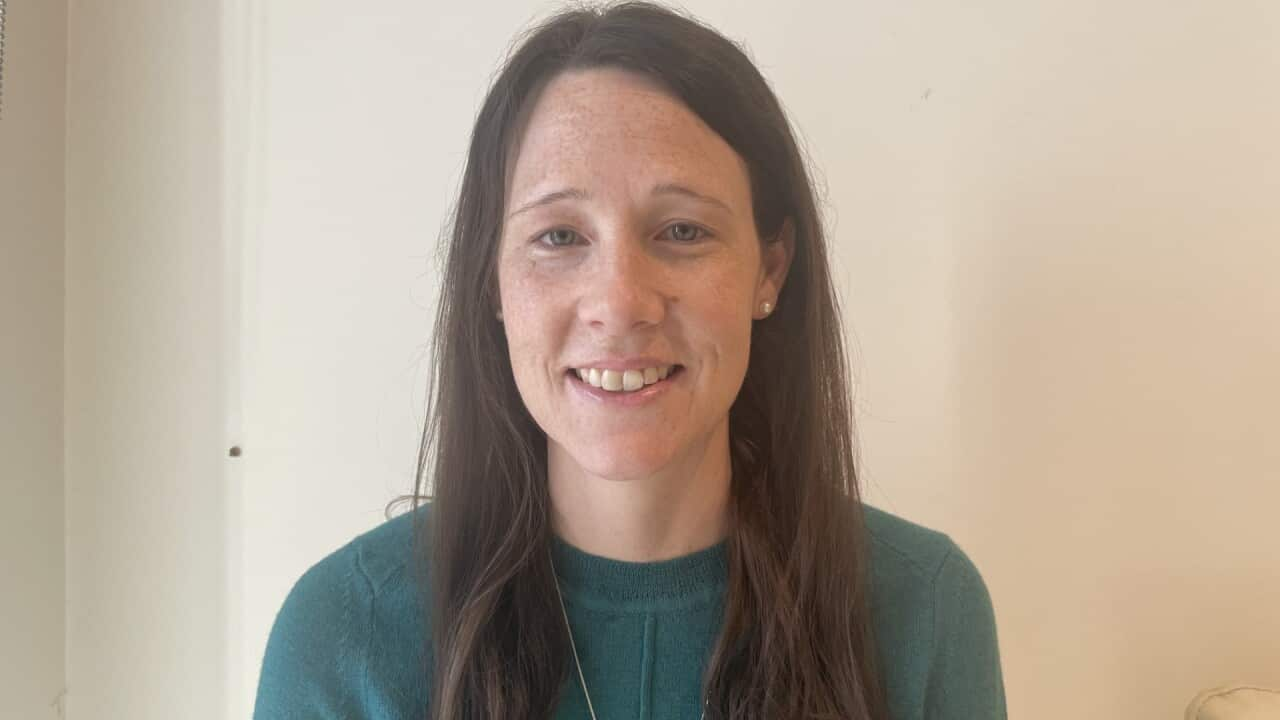Key Points
- Advocates and survivors of a rare group of cancers have called for increased funding for clinical trials.
- There are more than 80 different types/diagnoses within the sarcoma group of cancers.
- The cancerous tumour can grow in any body part and affect people at any age.
Stephanie Webster was several kilometres into a run when she felt something was wrong.
An avid runner, she remembers taking a step and feeling a sharp pain in the hip.
She didn't think it was anything serious.
"I thought I might have done a minor insufficiency fracture with running because I did do a lot of running," Ms Webster recalls of the incident, which happened more than six years ago.
"I was completely surprised when my GP told me the results from the imaging scans. I was very shocked."
Ms Webster would be later diagnosed with osteosarcoma.
What is osteosarcoma?
The condition belongs to a group of rare cancers group known as sarcoma of which there are more than 80 types. It can develop at any age in any part of the body, including in bones or muscles.
As a medical student at the time, Ms Webster had studied cancer types, but the rarity of sarcoma and the patient journey was something she had no in-depth perspective of until she encountered it first-hand.
First came the CT and MRI scans then a biopsy. Six weeks later the results were in.
"Those six weeks in between were pretty tough with the waiting and not knowing exactly what was going on," she said.
Less than five months to live
Ms Webster started treatment, only to find out that the cancer had spread.
In 2018, she was given a prognosis of less than five months and told by her oncologist she would not make it to her sister's wedding.
Ms Webster didn't give up. She looked beyond the standard treatment options and with the support of her family and community, self-funded a targeted immunotherapy treatment usually used for melanoma or lung cancer.
"Without it, I know that I wouldn't be here today," Ms Webster said.
"The immunotherapy we did have to self-fund because it's not indicated for my type of cancer. And it was also quite reasonably new: Pembrolizumab, which is most well-known initially for treating melanoma and is now used for multiple other cancers."
Ms Webster responded to the treatment, with noticeable results within a month. Today, her scans are clear.
"I'm just incredibly lucky that I had an unexpected positive result to the immunotherapy. And now on imaging scans, I don't have any evidence of disease."
How rare is sarcoma in Australia?
Around 1,600 Australians are diagnosed with a soft-tissue sarcoma annually — that's about six cases per 100,000 people.
The Australia and New Zealand Sarcoma Association (ANZSA) says sarcoma is the deadliest cancer for young adults aged 30 years and under.
"It actually accounts for 20 per cent of all cancers in children, and 10 per cent of all cancers in the adolescent and young adult age group," ANZSA CEO Dr Denise Caruso told SBS News.

Dr Denise Caruso says the fact that sarcoma can manifest in any part of the body has made it a challenging disease to raise awareness about. Source: Supplied / Denise Caruso
Sarcoma Awareness month is marked annually in July. Dr Caruso said the fundraising goal - from the public and governments - is to raise enough money to get clinical trials off the ground for improved treatment options.
"We'd be able to move novel therapeutics into clinical trials and then determine whether or not they are applicable for sarcomas," Dr Caruso said.
Treatment for sarcoma hasn't changed for decades
Ms Webster was already interested in oncology, but now as a third-year doctor, she's more determined to maintain that goal.
She also would like to see more funding for research to improve patient outcomes and survival rates, which are currently at 70 per cent.
"For osteosarcoma, we're still using the same kind of standard treatment that's been used for 30-odd years," she said.
"I hope people going through sarcoma treatment are getting what resources and supports they can because it is a challenging diagnosis."












